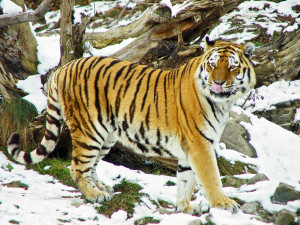
Many ecologists believe that the sixth mass extinction is underway. Whereas previous mass extinctions have been associated with cataclysmic events like asteroid strikes, this one is said to be associated with the impact of humanity on nature.
However, when we start to discuss actual numbers, things get very complicated very quickly. The Millennium Ecosystem Assessment, for example, estimated that 24 species are going extinct each day. The recent U. N. Convention on Biological Diversity estimated that up to 150 species a day are being lost.
How can these estimates vary by so much? The problem is that we don’t really know that much about the Earth’s biodiversity. How many species are there on the planet? Nearly 2 million have been documented but many more are yet to be discovered. Some experts say that there are as many as 100 million. One Smithsonian study said that there may be 30 million insect species alone. Others say that the numbers are far less.
We have a pretty good handle on the numbers of vertebrate species. They are generally larger and more noticeable than other animals. Some kinds of invertebrates, such as land snails, have been studied in detail. But among those, for example, it turns out that there has been a deal deal of double counting among species.
Much of what we believe about biodiversity is based on extrapolating over geographic areas and across different animal types. There is not very much empirical data and there is little agreement.
There is no question that habitat destruction, climate change, and human intervention are altering ecosystems around the world. But getting an accurate handle on the changing face of the biosphere presents a formidable challenge.
**********
Web Links
Global Extinction Rates: Why Do Estimates Vary So Wildly?
Photo, posted November 27, 2005, courtesy of Tambako the Jaguar via Flickr.
Earth Wise is a production of WAMC Northeast Public Radio.
